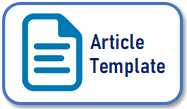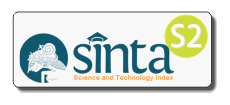The Critical Aspect on Fair Value Accounting and its Implication to Islamic Financial Institutions
DOI:
https://doi.org/10.14421/grieb.2014.013-05Keywords:
Fair Value, AAOIFI, IFRSAbstract
Recently, fair value measurement and its implication in accounting standards have been increasing (Ramanna, 2006). One of the important aspects of financial reporting is measurement (Barth, 2007). Barlev and Haddad (2003) state that the fair value accounting(FVA) paradigm replaced the historical cost accounting (HCA) in the development of accounting standards that FVA is more value relevant that HCA probably did not provide the real financial information and income. However, previously studies mention that fair value accounting suffers from some serious limitations and disadvantages such as issues in market approach, income approach, and cost approach. Al-Yassen and Al-Khadash (2011) argue that accounting standard setters such as the International Accounting Standards Board (IASB) UK and the Financial Accounting Standards Board (FASB) U.S as well as other national accountingstandard setters provide high attention and long-term ambition to use fair value accounting as full measurement in all financial instruments. Islamic Financial Institutions (IFIs) that have different objectives and principles as well as have different financial products with conventional financial institution. This paper tries to explore critical aspects of the fair value accounting andits implications to Islamic Financial Institutions implications. This study concludes that that fair value accounting measurement provides many critical aspects to be implemented to Islamic Financial Institutions (IFIs). Additionally, AAOIFI proposed cash equivalent value as respond to fair value measurement that cash equivalent value when the attribute condition are present such as the relevance, reliability and understandability of the resulting information. Furthermore, fully adopting International Financial Reporting Standards (IFRS) issued by IFRSIASB, there will no specific standards for unique functions of Islamic Financial Institutions. Inaddition, the paper may be recommended to work together among Muslim countries to unity the potential harmonizing one set accounting standards for Islamic Financial Institutions such as AAOIFI?s standards.Downloads
 Abstract viewed: 1108 times
|
Abstract viewed: 1108 times
|
 PDF downloaded = 745 times
PDF downloaded = 745 times
References
AAOIFI. FAS No. 2. (2010). Accounting and Auditing Standards for Islamic Financial Institutions. Manama, Bahrain: Accounting and Auditing Organization for Islamic Financial Institutions.
AAOIFI. FAS No. 9. (2010). Accounting and Auditing Standards for Islamic Financial Institutions. Manama, Bahrain: Accounting and Auditing Organization for Islamic Financial Institutions.
Abdul Rahman, A. R. (2003). Ethics in Accounting Education: Contribution of the Islamic Principle of Maslahah, IIUM Journal of Economics and Management, 11(1), 1-18.
Abdul Rahman, A. R. (2007). Pre-Requisites for Effective Integration of Zakat into Mainstream Islamic Financial System in Malaysia. Islamic Economic Studies, 14(1&2), 91-107.
Abdul Rahman, A. R. (2010). An Introduction to Islamic Accounting Theory and Practices CERT Publication, Kuala Lumpur, Malaysia.
Abdul Rahman, A. R. (2012). Islamic Accounting Practices-Accounting for Islamic Finance. Slides of Islamic Accounting and Finance (ACC 6810) semester 1 2012/2013. Accounting Department, International Islamic University Malaysia.
Adnan, M. A., and Gaffikin, M. (1997). The Shariah, Islamic Banks and Accounting Concepts and Practices. Paper Presented at Accounting, Commerce and Finance: The Islamic Perspective International Conference. Sydney, Australia.
Ahmed, E. A. (1994). Accounting Postulates and Principles from an Islamic Perspective. Review of Islamic Economics, 3(2), 1-18.
Al-Yaseem, B. S., and Al-Khadash, H. A. (2011). Risk Relevance of Fair Value Income Measures Under IAS 39 and IAS 40. Journal of Accounting in Emerging Economies, 1(1), 9-32.
Bakar, N. B. A., and Abdul Rahman, A. R. (2007). A Comparative Study of Zakat and Modern Taxation. Journal of Islamic Economics King Abdul Aziz University,20(1), 25-40.
Ball, R. (2006). International Financial Reporting Standards (IFRS): Pros and Cons for Investors. Accounting and Business Research, International Accounting Forum, 5-27.
Barth, M. E. (2007). Standard-Setting Measurement Issues and the Relevance of Research. Accounting and Business Research, 37(3),7-15.
Barth, M., and Taylor, D. (2010). In Defense of Fair Value: Weighing the Evidence on Earning Management and Asset Securitizations. Journal of Accounting and Economics,49, 26-33.
Barlev, B., and Haddad, J. R. (2003). Fair value Accounting and the Management of the Firm. Critical Perspectives on Accounting, 14(4), 383415.
Benston, G. J. (2006). Fair-Value Accounting: A Cautionary Tale from Enron. Journal of Accounting and Public Policy 25(4), 465484.
Benston, G. J. (2008). The Shortcoming of Fair-Value Accounting Described in SFAS 157. Journal of Accounting and Public Policy, 27,101114.
Bragg, S. M. (2010). GAAP 2011 Interpretation and Application of Generally Acceptanced Accounting Principles, New Jersey, the United States of America: John Wiley & Sons.
Broadley, P. (2007). Discussion of Financial Reporting Quality: is Fair Value A Plus or A minus??. Accounting and Business Research, 45-48.
Chea, A. C. (2011). Fair Value Accounting: Its Impacts on Financial Reporting and How It Can Be Enhanced to Provide More Clarity and Reliability of Information for Users of Financial Statements. International Journal of Business and Social Science, 2(20), 12-18.
Deaconu, A., and Buiga, A. (2010). Analysis of the Convergence Degree Between the Accounting and the Valuation Standards Concerning Fair Value. Journal of Property Investment and Finance. 28(5), 365-384.
Dean, S. (2007). Discussion of Fair Value Accounting Information Relevant and Reliable? Evidence from Capital Market Research??. Accounting and Business Research, 31-32.
Jr, J. D. (2011). Market Value, Fair Value, and Duress. Journal of Property Investment and Finance, 29(4/5), 428-447.
Hijazi, S., and Tayyebi, A. (2010). Accountancy Futures, Harmonising Financial Reporting of Islamic Finance. Paper Report?s KPMG and ACCA.
Hitz, J-M. (2007). The Decision Usefulness of Fair Value Accounting-A Theoretical Perspective. European Accounting Review, 16(2), 323-362.
Holban (oncioiu), E. I., and Oncioiu, F. R. (2009). The Critical Aspect on Using Fair Value for Financial Instruments. Acta Universitatis Danubius Oeconomica, 5(1), 92-100.
Ibrahim, S. H. M. (2007). IFRS vs. AAOIFI: The Clash of Standards?. Munich Personal PepPEc Archive (MPRA) Paper no. 12539. Posted 06 January 2009.
Karim, R. A. A. (1995). The Nature and Rational of Conceptual Framework for Financial Reporting by Islamic Banks. Accounting and Business Research, 25(100), 285-300.
Karim, R. A. A. (2001). International Accounting Harmonization, Banking Regulation, and Islamic Banks. The International Journal of Accounting, 26, 169-193.
Lewis, M. K. (2001). Islamic and Accounting. Accounting Forum, 25(2), 103-127.
Lewis, M. K. (2006). Accountability and Islam. Paper Presented at Fourth International Conference on Accounting and Finance in Transition. Adelaide: Australia.
Maali, B., Casson, P., and Napier, C. (2006). Social Reporting by Islamic Banks. ABACUS, 42( 2), 266-289.
Martin, D. B. H., and Covington & Burling LLP. (2008). Disclosure Implication of Fair Value Accounting and The Subprime Mortgage Crisis.
Mirza, M., and Baydoun, N. (2000). Accounting Policy Choice in A Riba-Free Environment. Accounting, Commerce & Finance: The Islamic Perspective Journal. 4(1&2), 30-47.
Napier, C. (2007). Other Cultures, Other Accounting? Islamic Accounting from Past to Present. Paper presented at the fifth Accounting History International Conference. Banff, Canada.
Penman, S. H. (2007). Financial Reporting Quality: Is Fair Value a Plus and a Minus? Accounting and Business Research Special Issue: International Accounting Policy Forum, 33-44.
Ramanna, K. (2008). The Implication of Unverifiable Fair-Value Accounting: Evidence from Political Economy of Goodwill Accounting. Journal of Accounting and Economics, 45, 253-281.
Shaffer, S. (2011). Evaluating the Impact of Fair Value Accounting on Financial Institutions: Implication for Accounting standards Setting and Bank Supervision. Working Paper No. QAU 12-01. Federal Reserve Bank of Boston, United States of America.
Smith, M., and Stella, S. (2009). Value-Relevance of Presenting Changes in Fair Value of Investment Properties in the Income Statement: Evidence from Hong Kong. Accounting and Business Research, 39(2), 103-118.
Rasid, S. Z. R., Abdul Rahman, A. R., and Ismail, W. K. W (2011).Management Accounting Systems in Islamic and Conventional Financial Institutions in Malaysia. Journal of Islamic Accounting and Business Research, 2(2), 153 176.
Rrolle, J-F. (2008). The Fair Value Debate: from Accounting Utopia to Financial Realism. Revue Trimestrielle de Droit Financier, 4, 1-12.
Ryan, S. G. (2008). Fair Value Accounting: Understanding The Issues Raised by the Credit Crunch. Paper Presented at The Council of Institutional Investors. New York. U.S.A.
Wahab, N. A., and Abdul Rahman, A. R. (2011). A Framework to Analyses the Efficiency and Governance of Zakat Institutions. Journal of Islamic Accounting and Business Research, 2(1), 43-62.
Walton, P. (2006). A Research Note: Fair Value and Executory Contracts: Moving the Boundaries in International Financial Reporting. Accounting and Business Research, 36(4), 337-343.
Xia, L., and Monroe, K. B. (2010). Is a good deal always fair? Examining the Concepts of Transaction Value and Price Fairness. Journal of Economic Phychology, 31, 884-894.
Yaya, R. (2004). Would The Objectives and Characteristics of Islamic Accounting for Islamic Business Organizations Meet the Islamic socio-Economic Objective?. Journal of Accounting and Auditing Indonesia, 8(2), 141-163.
Zijl, T. V., and Whittington, G. (2006). Deprival Value and Fair Value: A Reinterpretation and A Reconciliation. Accounting and Business Research, 36(2), 121-130.
Downloads
Published
Issue
Section
License
Global Review of Islamic Economics and Business is licensed under a
Creative Commons Attribution-ShareAlike 4.0 International License



















